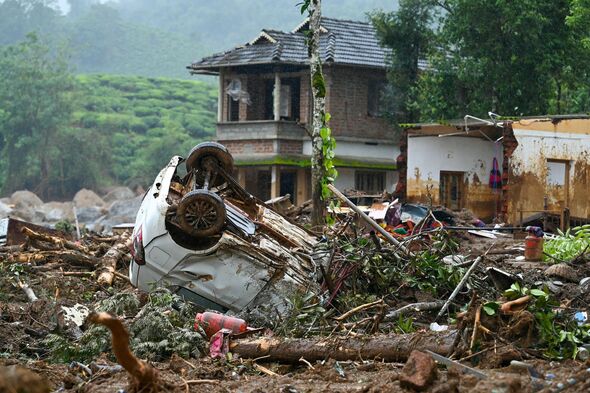An overtourism row has erupted in India after a horror landslide killed hundreds.
Last month, the village of Mundakkai was devastated by landslides that claimed the lives of 205 people, nearly all of them local residents. Hundreds of homes were swept away and crushed by two huge consecutive landslides in the hilly district of Wayanad in the middle of the night on the 30th July.
The landslides occurred after the steep terrain was hit by five times the normal amount of rain, with some regions reporting more than 300mm (1ft) of rainfall within 24 hours. This tragedy struck one of Kerala state’s most popular tourist regions, Wayanad.
Mundakkai, the worst affected area in Wayanad, was home to around 500 families. The neighbouring areas housed nearly 700 resorts, homestays and zip-lining stations attracting trekkers, honeymooners and tourists looking to be close to nature.
The Indian army is said to have evacuated more than 5,500 people from the area, including hundreds of stranded tourists, and took them to dozens of relief camps as the heavy rains continued.
While weather-related disasters are not uncommon in India, the recent landslides in Kerala were the deadliest since the 2018 floods that claimed about 400 lives.
The scale of destruction has sparked a debate among local authorities about whether the rapid development of the tourism industry in this ecologically sensitive area contributed to the disaster.
Experts had long warned of the potential for such a catastrophe. Over the past 13 years, multiple government reports cautioned that unchecked over-development in these vulnerable regions would exacerbate the risk of landslides and other environmental disasters such as floods, by disrupting natural water flows. Despite these warnings, they were largely overlooked.
Just three weeks before the disaster, Kerala’s Tourism Minister, P. A. Mohammed Riyas, highlighted the growing strain on Wayanad’s infrastructure, stating that the area was “dealing with an influx of more people than it can handle,” a clear sign of over-tourism.
Residents believe that the prolonged heavy rains had loosened the hills above Mundakkai, and an unusually intense downpour on the night of July 29th triggered rivers of mud, water, and boulders to cascade downhill, sweeping away settlements and people.
Wayanad received more than a million domestic and international tourists last year, nearly triple the number from 2011 when a federal government report first warned against overdevelopment in the district’s broader mountain range.
Mundakkai itself only gained popularity among tourists after 2019 when its beautiful selection of tea and cardamom plantations attracted the attention of outsiders.
This surge in interest led many locals to sell their land, which were quickly transformed into retreats and resorts by tourists, further altering the landscape and contributing to the area’s vulnerability.
As the community grapples with the aftermath, questions loom large about the cost of unchecked development and the future of tourism in ecologically fragile regions like Wayanad.

There is evidently a bundle to know about this. I consider you made some nice points in features also.
What i don’t understood is in reality how you’re no longer actually a lot more well-appreciated than you may be right now. You’re very intelligent. You understand therefore considerably when it comes to this topic, made me in my view consider it from numerous varied angles. Its like men and women aren’t interested until it is one thing to do with Lady gaga! Your individual stuffs nice. All the time take care of it up!